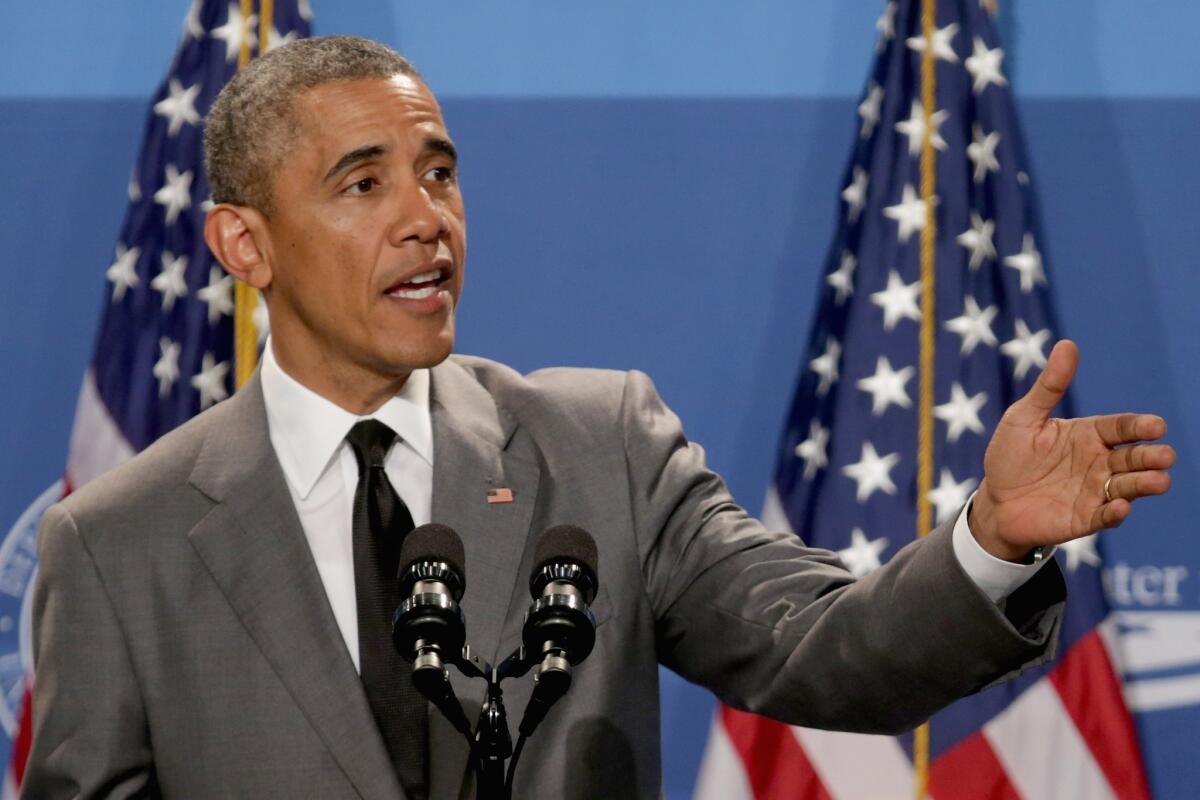Editorial: There’s family value in paid parental leave

- Share via
For a country that so often extols family values, the United States makes it awfully hard for Americans to care for their children. In Britain, Sweden and Norway, parents are granted about a year of paid parental leave to tend to their newborns during that particularly crucial and difficult period. In the U.S., on the other hand, federal law guarantees workers a mere 12 weeks of parental leave without pay.
In fact, the U.S. is the last remaining industrialized nation to offer only unpaid parental leave to workers. And even this overstates its generosity. The federal government deems workers eligible for unpaid parental leave only if they have been with their employer for at least 12 months, if their employer has at least 50 employees, and if they worked at least 1,250 hours during that yearlong period. Given these and other restrictions, only about 60% of private sector workers are covered. Things are even worse for low-income and minority parents, who are far more likely to be denied coverage because of the restrictions.
As a result, parents often must choose caring for a newborn over maintaining financial stability — and it is typically the mother who is forced to sacrifice her career. This system puts children at risk, perpetuates gender inequality and does a gross disservice to American families.
A week ago, President Obama announced his support for paid maternity leave at the federal level. “Many women can’t even get a paid day off to give birth — now that’s a pretty low bar,” he told the audience at the White House Summit on Working Families. “That, we should be able to take care of.” He was right to voice his support. After all, only 12% of workers have access to paid leave through state programs or more generous employers. A quarter of mothers who work during pregnancy either quit their jobs or are let go when a new child arrives, and those who receive only partial pay or no pay at all face financial hardship. The inadequate policies take a toll on family health as well as wealth, because maternity leave lowers infant mortality rates, illness and hospitalization for mother and child alike.
Any plan to address parental leave would be incomplete without a flexible plan for paternity leave as well. Not only do many new parents want to break out of the limited gender roles that have traditionally been offered to them, but fathers who can take paternity leave have been shown to become more competent and committed throughout their children’s lives, according to the Organization for Economic Cooperation and Development. A study by the Boston College Center for Work and Family found that new fathers tend to take paternity leave only for as long as they are paid to do so. But only 14% of employers offer any pay for “spouse or partner” leave, compared with 58% for maternity leave.
California has recognized the need for reform and has passed laws to cover more workers and offer more substantial services. California is one of only three states — New Jersey and Rhode Island are others — to have established paid family and medical leave policies, with costs borne by employees. Under California’s plan, eligible new parents — male or female — can choose to receive six weeks of paid leave financed through a payroll tax that is added to the six weeks granted to new mothers through the existing Temporary Disability Insurance program. Employees receive 55% of their salaries up to a maximum of $1,067 per week. Before the program commenced in 2004, only 35% of fathers took off for paternity leave. Now 75% do, and for more time.
It’s not just families reaping the benefits. According to a study by the Center for American Progress, paid family leave keeps workers in the labor force who might otherwise drop out or be forced to quit their jobs. It yields additional economic gains through lower healthcare expenses, reduced recruitment and retraining, and improved lifetime earnings for female workers.
American families are changing. We are not the homogeneous collection of working fathers and domestic mothers that we have long mythologized. More families than ever have mothers as the primary breadwinners, fathers who tend to the children, same-sex parents, adopted children and single parents. If all families are to flourish, our public policy should embrace their diversity.
More to Read
A cure for the common opinion
Get thought-provoking perspectives with our weekly newsletter.
You may occasionally receive promotional content from the Los Angeles Times.










